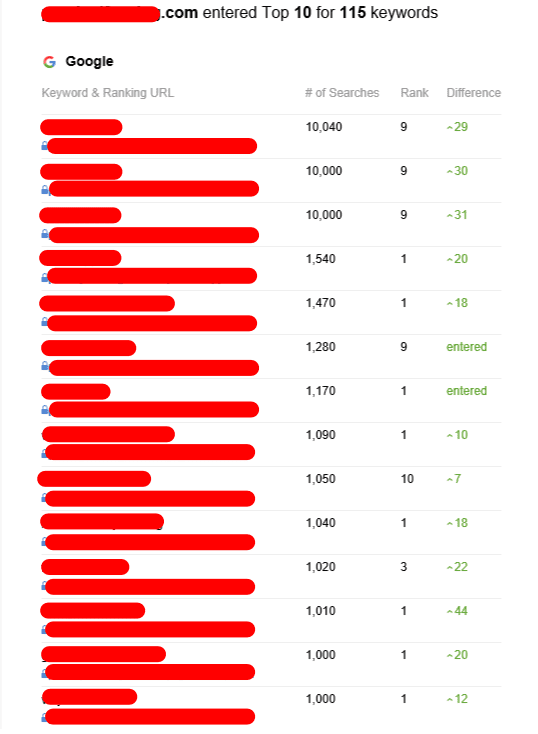5 Arguments Tier 2 Backlink Is Actually A Good Thing

Backlink Tier - The Hierarchy of Backlinks That Scale Your SEO Campaign
Backlink tier refers the hierarchy of links that you create in order to boost your SEO campaign. Each level provides a layer of protection against Google hounding you with penalties.
Tiered link building takes a lot of time and effort to get things right. That's because Google takes weeks to discover new backlinks, and then evaluate their quality on the basis of each link.
First-Tier Links
The first level of links that lead to your particular piece of content must be high-quality dofollow backlinks that are from reliable websites. These links are known as Tier 1 backlinks and act as the base of your link building strategy. They provide your website with sufficient domain authority to rank well on results pages of search engines. If, for instance, your blog post was published on HubSpot and contained a tier-one hyperlink to SearchEngineLand's compilation Link Building Statistics then SearchEngineLand’s web page rankings will benefit from the link equity that HubSpot transferred to SearchEngineLand.
The second tier of backlinks could be a little more diverse and can contain low-quality links, such as spammy forum posts or bookmark sites with low value and directories. The primary objective of Tier 2 is to create high-quality content that links back to your first-tier backlinks. This is because quality content can enhance the content which it resides, and will not stand out as something that is added to SEO reasons.
To create a successful tiered marketing campaign, you'll have to invest in high-quality tools and content such as RankerX or GSA. The time and expense of manually performing a tiered campaign is well worthwhile if you intend to see the increase in ranking benefits of a properly constructed backlink pyramid.
Second-Tier Links
Tiered link development is designed to guide users through different pages before they get to your website. To make this work it is essential to select second-tier backlink sources that are relevant to your industry and site. Guest blog posts are more effective for this purpose than account profiles since they provide valuable content that users will want to consume.
In general, you should avoid using tier 2 links in forums or other sites that aren't of high-quality. Instead, use high-quality pages like industry news or guest articles. These links will appear more natural and will have a greater impact on your search engine rankings. Additionally they're more likely be identified by Google as passing link equity, which may increase their rank in SERPs.
If you're looking to boost your SEO rank Be aware that obtaining high-quality links manually is difficult. It takes months to submit guest blog posts to first-tier publications, and even longer to wait for them to be published. In addition, it can take weeks to see the results of your efforts when it comes to increasing traffic to your site and conversions.
Many SEOs use automated tools to create second-tier backlinks. This technique could violate Google's Webmaster Guidelines and result in an enactment of penalization.
Third-tier Links
The number of links on this level is enormous and could be borderline spammy. They are published on social media platforms and on user-generated content sites such as Quora. They help with the indexing of tier two links, but they don't transfer any link equity to the resource being promoted. In general, they are nofollow links. At this stage, marketers are more concerned about quantity than quality. They employ tools to publish an huge amounts of links on forums, in the comments of blog posts and articles directories, and other similar places. This is the place where tiered linking is a gray area that is in violation of Google's webmaster guidelines.
Link-building campaigns that are tied require an immense amount of time and effort to be successful. Google may take months or even days to rank the backlink. It may then take weeks or months to see an SEO effect. Marketers should be patient, and utilize a carefully-planned content strategy.
Additionally marketers should be cautious about using numerous automation tools for this kind of linking. They could violate the rules of search engine optimization and could lead to penalties. It is best to manually pick and post links on relevant websites of donors instead of using automated services such as GSA or RankerX. This will stop the search engine from penalizing your promotion using links that are not of high quality.
Fourth-Tier Links
Tiered link building is still an effective method of improving website rankings. However it is now that Google has made substantial efforts to eradicate "black black" SEO practices, tiered linking methods have suffered a blow.

tiered backlink are classified as gray-hat SEO techniques and are punished for their deliberate use. Tiered links are backlinks constructed based on different levels of a link pyramid. The primary function of these backlinks is to increase the rank of a resource promoted in search results. The promoted web page will be more prominent than its competitors and receive more organic traffic.
This is a lower-quality tier of backlinks, and are usually nofollow. This tier can also comprise low-quality directories, article networks, and social media profiles. Links can be generated by natural means or through automated strategies, but they must be diverse in terms of domains, niches, and relevance.
These backlinks, apart from being of poor quality and nofollow are also prone to problems when they're not sufficiently diversified. Google has a group of highly-trained hound dogs who are always looking for patterns and techniques in backlink profiles. If they are found, not only could the link-building team get penalized, but also its clients.
